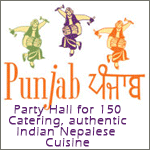Let's add on Nepal's ranking in the globe to better know where we are.
Maternal Mortality
Nepal Ranked second in world maternal mortality rate
Statistics presented by the Ministry of Health and Population states that 539 women among each hundred thousand die in Nepal at the time of giving birth.
"Globally, unsafe motherhood silently steals over half a million lives a year. In Nepal, between 5,000 and 6,000 mothers die each year in childbirth. This death toll of one woman every 90 minutes makes Nepal one of the deadliest places in the world to give birth – yet their plight goes unreported," the report says.
"Meanwhile, an estimated 30,000 babies a year die before they are a month old. Behind these hidden tragedies lie delays in seeking care, delays in reaching a healthcare facility and delays in accessing adequate treatment at the facility," the report has added.
Source: today's ekantipur.com, newsofnepal.com and world disaster report 2006


Know the facts
Over 20 years ago, international experts identified
three kinds of delay, known as the ‘3Ds’, which are particularly applicable in Nepal:
â– Delay in deciding to seek care.
â– Delay in reaching a healthcare facility.
â– Delay in accessing adequate treatment at the facility.
Women living in traditional Nepalese societies suffer social and religious
discrimination. A woman is treated as ‘untouchable’ during her first menstruation.
She is not allowed to see the sun, her husband or her brother due to a superstition
that her male relatives would die. Women are not allowed to discuss pregnancy with
anyone other than their husbands and mothers-in-law.
For the first 11 days after giving birth, a woman is regarded as polluted and impure.
Male relatives, including the husband, cannot go near her, so she is forced to live in
isolation – often in a cowshed or makeshift hut. She sleeps with her newborn on a
cold floor in unhygienic conditions, increasing her chances of septicaemia and risking
the infant’s health. Male relatives don’t want to touch women who bleed after giving
birth, while private and public vehicles alike may refuse to transport them.
For Maili Chettri, it would have cost around US$ 250 to fly from Rukum to Nepalganj, catch a bus to the hospital and find accommodation – before considering the price of
surgery and medicine. Such an expense is unthinkable to many Nepalese. In Maili’s
region, the average agricultural wage is 54 rupees (75 US cents) a day, according
to the World Bank. Nationwide, over 80 per cent of Nepalese subsist on less than
US$ 2 a day.
Out of an estimated 900,000 pregnancies in Nepal each year, the UN estimates that
around 129,000 develop life-threatening complications and will require EmOC
services. To access these services, women must travel to the district centre. However,
of Nepal’s 75 districts, only 25 have comprehensive EmOC facilities, while there are
just 17 basic EmOC facilities in other locations. Surgery and blood transfusion
services are limited (see Box 4.2). As a result, 95 per cent of women who develop birth complications receive no emergency care, according to the United Nations Children’s
Fund (UNICEF) in a report dated 2000.
Dangerous motherhood practices significantly contribute to Nepal’s high infant
mortality rate (IMR) of 64 per 1,000 live births. According to the government’s 2001
survey, around 50,000 children die each year before their first birthday. Of these, twothirds die within 28 days, which equates to over 30,000 neonatal deaths annually –
one every 20 minutes.
A WFP survey of 1,359 women across Nepal in 2005 found that 63 per cent of those
in the terai and 45 per cent of those in the hills and mountains weighed less than the
45kg threshold. Poorly nourished mothers are not only more prone to bleeding and
infection, their babies are born smaller and are more vulnerable to potentially deadly
diarrhoea and pneumonia. A quarter of Nepal’s newborns are underweight, at less
than 2.5kg.
www.redcross.org/static/file_cont5917_lang0_2248.pdf











